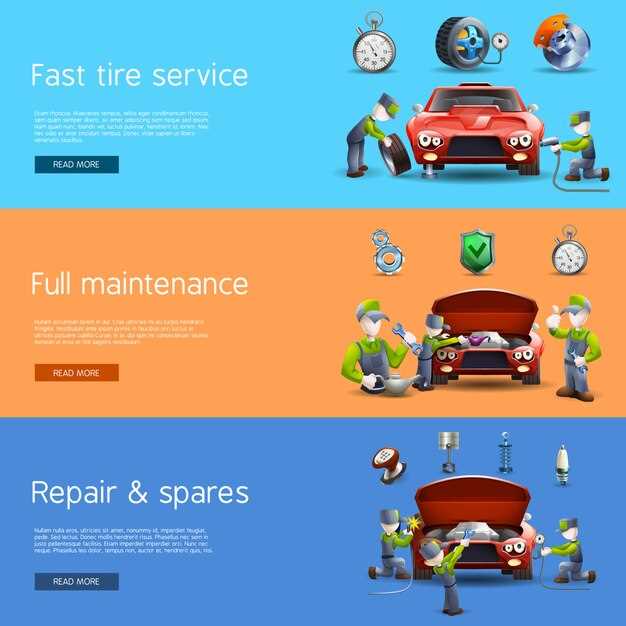
After the adrenaline rush of a race, the importance of a thorough post-race car inspection can’t be overstated. This critical process ensures that your vehicle remains safe, reliable, and ready for future competitions. By performing a detailed check, drivers can identify potential issues that may have arisen during the race, helping to maintain optimal performance and prevent further damage.
Initially, it is essential to conduct a visual check of the car’s exterior. Inspect for any signs of damage from collisions or contact with other vehicles and barriers. Pay particular attention to areas such as the bodywork, bumpers, and windows. Additionally, examine the tires for any tread wear or punctures; this can significantly affect handling in future races.
Next, moving on to the under-the-hood inspection is crucial for ensuring that all mechanical components are functioning correctly. Check the engine for any leaks, and examine the fluid levels, including oil, coolant, and brake fluid. Any discrepancies in fluid levels could indicate a leak or an impending mechanical failure, making this step vital to driver safety.
Lastly, a comprehensive brake system evaluation should not be overlooked. Inspect brake pads and rotors for wear, and ensure that the brake lines are intact and free from damage. A car’s braking efficiency is paramount for safe operation, especially in high-stakes racing environments. Without proper attention to these components, drivers risk not only their performance but also their safety on the track.
Inspecting Exterior and Body for Damage

After a race, it’s crucial to conduct a thorough inspection of the car’s exterior and body to ensure it remains in optimal condition. This step is vital for both safety and performance in future events. Begin by examining the paint and body lines for any scratches, dents, or abrasions that may have occurred during the race.
Look for cracks or chips in the body panels, especially around the edges and joints, as these areas are more vulnerable to impact. Pay close attention to the front and rear bumpers, wheel wells, and side skirts, as they often encounter debris and contact during races.
Furthermore, check the alignment of body parts. Misaligned doors, hoods, or trunk lids can indicate underlying issues that may need addressing. Ensure that all panels are securely fastened, as loose components can lead to further damage or safety hazards on the track.
Assess the condition of any decals or sponsorship stickers, as peeling or damaged graphics can affect the car’s appearance and brand image. This assessment is also a part of general maintenance, as it contributes to the car’s overall aesthetics and professionalism.
Finally, ensure that the windows and mirrors are free from cracks or chips, which can impair visibility and affect safety. If any damage is detected, prioritize repairs before the next race to maintain both the vehicle’s integrity and its competitive edge.
Checking Fluid Levels and Conditions
After a race, it is essential for drivers to assess the various fluid levels within their vehicles to ensure optimal performance and longevity. The primary fluids that require inspection include engine oil, coolant, brake fluid, and transmission fluid. Each of these plays a critical role in the maintenance and functionality of the car.
Start with the engine oil. Check its level using the dipstick, and ensure it is within the recommended range. Additionally, observe the oil’s condition; it should be clear and free of debris. Dark or gritty oil may indicate the need for an oil change, especially after the intense exertion of a race.
Next, examine the coolant level in the reservoir. Proper coolant levels are vital for preventing overheating, particularly after the stresses of racing. A low coolant level may suggest leaks or other issues that need addressing. It is also important to check the coolant’s color and consistency; any signs of contamination or unusual coloration should be investigated further.
Brake fluid is another crucial element. Ensure that the fluid level is adequate and inspect it for clarity and absence of moisture. Contaminated brake fluid can compromise braking performance, which is critical for safety. If the fluid appears cloudy or has noticeably changed color, consider a complete brake system flush.
Lastly, check the transmission fluid. Use the appropriate method to ascertain the fluid level, often via a dipstick while the engine is running. The fluid should be bright red and should not have a burnt smell. Discolored or degraded fluid may require a replacement to maintain smooth shifting and prevent transmission issues.
Regular checks of these fluid levels and conditions not only support immediate performance needs but also contribute to long-term reliability and safety on the track. Proper maintenance of fluids is essential to ensure that the vehicle remains in race-ready condition for future events.
Evaluating Tire Performance and Tread Wear

After completing a race, it is essential to check tire performance and tread wear. This evaluation can significantly impact future races and safety on the track. Start with a visual inspection; look for any obvious signs of damage, such as cuts, bulges, or foreign objects embedded in the tire. Addressing these issues promptly can prevent further complications.
Next, measure the tread depth using a tread depth gauge. The minimum legal limit for most racing tires is usually around 3/32 inches, but for optimal performance, a higher tread depth is recommended. A tread depth measurement below this threshold indicates that the tire’s grip and traction will likely decrease, affecting handling and stability during cornering and braking.
In addition to tread depth, check for uneven wear patterns. This can signal alignment or suspension problems that need to be addressed. Look for signs of excessive wear on one side of the tire, which might indicate that the vehicle is not tracking correctly.
Finally, assess the tire compound’s performance. Different races may require specific rubber compounds, and understanding how the tires performed under race conditions can inform future tire choices. Collect data on how the tires responded regarding grip, heat, and wear rate throughout the race.
By diligently evaluating tire performance and tread wear, drivers can make informed decisions that enhance their vehicle’s performance and ensure safety in subsequent events.
